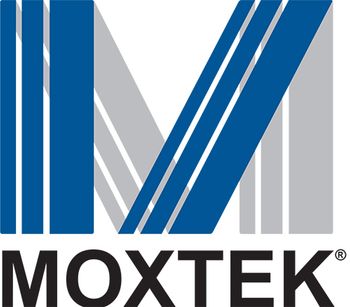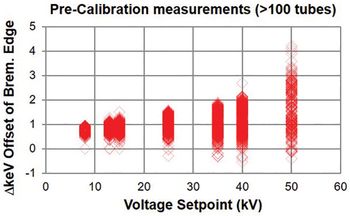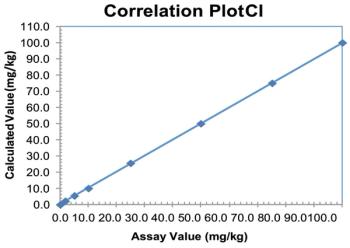
This study shows Raman imaging, atomic force microscopy and scanning near-field optical microscopy characterizing and depth-profiling polymer blends and layers.

This study shows Raman imaging, atomic force microscopy and scanning near-field optical microscopy characterizing and depth-profiling polymer blends and layers.

This industry report describes how the DMA-80 evo provides fast and accurate results for the analysis of mercury in nutraceutical samples without any sample prep.

This industry report describes how the DMA-80 evo can analyze as soils, sludges, and wastewater under EPA method 7473 without any wet chemistry sample prep in only 5 min.

This report shows how direct mercury analysis is used in the cement industry for testing raw materials prior to kiln combustion to control for Hg emissions.

Learn how Direct Mercury Analysis by thermal decomposition and amalgamation provides an accurate and easy to use technique that overcomes the limitations of ICP-MS.

This industry report describes how the DMA-80 evo can be used to determine mercury in coal samples in compliance with ASTM method 6722-01.

Mercury content in fish is an environmental and food safety concern. Learn how fish tissue analysis is performed with no sample prep using the DMA-80 evo.

This industry report describes how the Milestone ultraWAVE can process large, dissimilar and difficult pharmaceutical samples quickly and easily – all without batching.

Analysis of fertilizer products gives the ratio of macronutrients, which must be correct to ensure optimal efficacy. Learn how the ETHOS UP can process highly reactive fertilizer samples, even in large sample amounts.

Many polymers are very stable and require high temperatures and pressures to completely digest. Learn how the ultraWAVE can process these samples quickly and easily, yielding superior analytical data.

This industry report describes how the ETHOS UP can process highly reactive food samples, even in large amounts, yielding superior digestion quality and analytical data.

This article compares the differences and advantages of Single Reaction Chamber (SRC) Technology to traditional rotor-based microwave systems and explains what to consider when selecting the optimal technology for your lab.

This industry report describes how a variety of samples from the cannabis industry were digested simultaneously using disposable vials with full analyte recovery.

Demand for trace metals analysis in environmental labs is growing due to stricter regulations, and the need for lower levels of detection increasing. Learn how the ETHOS UP is fully compatible with US EPA environmental methods with accurate and full control of the digestion process.

This app report describes the analysis of coal samples by direct mercury analysis under the ASTM 6722-01 method.

Learn how a leading east coast contract laboratory optimizes their use of sample prep technology solutions to process a vast array of sample matrices to meet extraordinary sample throughput requirements.

The Niagara Rapid Rinse is the simplest, lowest-cost method of improving throughput for ICP-MS applications. Time saved is typically 30%.

Acid purification systems provide a continuous supply of high-purity acid for metals analysis. We present user data for both semiconductor and geochemical applications.

This application note demonstrates the CEM MARS 6 for microwave digestion of mixed cannabis and hemp containing products in a single run and elemental analysis of these products.

DMLS (Direct Metal Laser Sintering) is an industrial metal 3D printing method that fuses layers of fine metal powder particles, creating a metal part layer by layer. This report describes the analysis of alloy powders used for 3D printing.

This application note describes Application of High-Resolution Continuum Source Flame AAS for determination of macro-, microand ultra-micro element contents using only one dilution factor in a single measurement run.

Moxi™ X-ray source is calibrated to within ±250 V over all settings between 5 to 50 kV. This impressive accuracy and precision is achieved spectroscopically, by measuring an X-ray spectrum's bremsstrahlung edge and storing correction high voltage offset information on each source.

The analysis of organic chloride in crude is demonstrated per ASTM D4929 Part C using Monochromatic EDXRF (MEDXRF).



Compares the specifications and performance of the DST-1000 and DST-4000 Evaluation of the quality of HNO3 produced by the DST

This application note demonstrates the analysis of copper and iron on Millipore and cation water filters by energy dispersive X-ray fluorescence, and highlights the performance of the Rigaku NEX DE Energy Dispersive X-ray Fluorescence Spectrometer.

This application note describes how to acquire Reproducible and reliable determination of total organic carbon (TOC) content in drinking water providing a high inorganic-carbon matrix.

The Niagara Rapid Rinse is the simplest, lowest-cost method of improving throughput for ICP-MS applications. Time saved with the Niagara is typically 30%, with little to no changes to the current method settings and no degradation in performance.

Spectroscopically identical x-ray sources allow OEMs to use a standard calibration and allows direct switching of x-ray sources in instruments without additional effort.